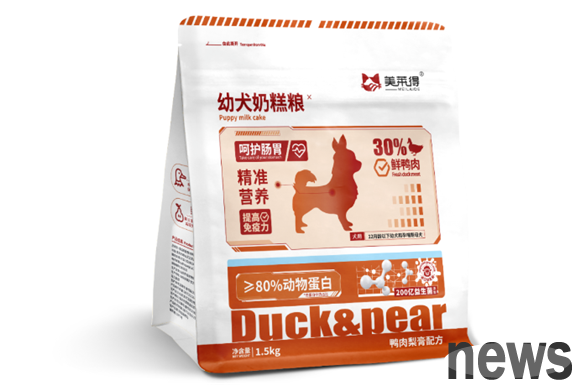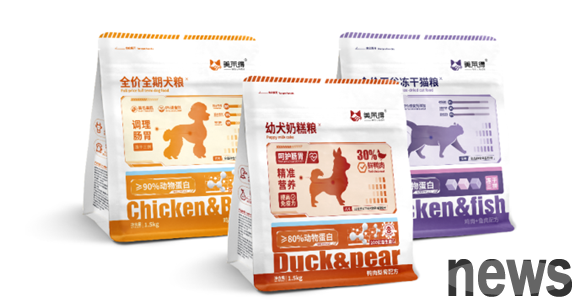kennel and its management
1. The selection and construction requirements of kennel locations and layouts of kennels must comply with the overall plan and be as flat as possible. The terrain should generally be lower than that of human residential areas, but the kennel cannot be built in low-lying places to avoid pollution from sewage.
Building kennels should be adapted to local conditions and are economical and applicable. When designing a kennel, considering factors such as sufficient light, air circulation, warm winter and cool summer, moisture-proof and drainage, and solid and safe. Pay attention to the hygiene around the kennel. The kennel should be kept away from places such as condoms, garbage dumps, sewage puddles, livestock and poultry farms, chemical plants, and other places where there are serious pollution hazards and infectious diseases are prone to occur.

It is best to use brick and tile and cement structures for the kennels, steel and wood structures, and corner iron and barbed wire mesh for the partition walls of the movable yards. This is both sturdy and safe, prevents biting, and is also easy to clean and scrub. The kennel area should be equipped with a wall to keep a certain distance from the highway and residential areas. Trees should be planted around the kennel to regulate the climate and beautify the environment.
2. Specifications of various kennels
(1) Large kennels
Large kennels should be one dog and one kennel. In order to save materials and facilitate management, several kennels can be built together. Each kennel activity field shall not be less than 1.80m×1.00m.
(2) The puppy kennel
is used to raise weaned puppies. The kennel consists of closed-style houses and sports fields. Due to the needs of group living, the indoor area of the puppy kennel cannot be less than 6 square meters, and the area of the activity site shall not be less than 45 square meters.
(3) The kennel
is for pregnant and lactation dogs. The kennel should be connected to the nursing duty room. The area of the dog room is about 9m2 and the height is 2.5m. There should be heating equipment in cold winters and direct sunlight should be avoided in summer. The area of the kennel is not less than 9m2, and the partition wall (network) is not less than 1.8m; a corridor can be built on the north side of the kennel, and an observation port should be left on the kennel door to observe the kennel activities.
(4) Isolated kennel
is specially built for sick dogs, and should be away from healthy dog areas and have nursing staff lounges and treatment rooms. The buildings of isolated kennels can be designed with reference to the kennels.
The above-mentioned fixed kennels must be equipped with a water supply system to facilitate the dog's drinking water and rinsing of the kennel.
(5) Simple kennel
For easy mobile use, simple kennels can be made. This kennel can be made of bamboo, wood, steel, hard plastic, etc., but it must be disassembled and folded for easy movement. This kind of kennel only needs to accommodate a dog to rest, and the area should not be large. It is generally 1.2m long, 1m wide and 1m high, but it must be able to protect against wind, rain, heat insulation and heat insulation. The dog can be nailed on the front field of the kennel and tied the dog with iron chains so that the dog can move freely.
(6) Check the kennel frequently for damage, and repair it in time if it is found. After putting the dog in the cottage, insert the door or lock it. Do not be careless to prevent accidents. Daily management of dogs
1. Hygiene of kennels
The kennels are places where dogs live, and the good or bad sanitary conditions will directly affect the health of the dog. Therefore, the feces must be removed at any time and the kennel must be cleaned once a day. Disinfect once a month. Commonly used disinfectants include 3% to 5% Lessour solution, 10% to 20% bleach emulsion, 0.3% to 0.5% peroxygenic acid solution, 0.3% to 1.0% Nongle (complex phenol) solution, 1:60 to 100 Nongfu solution, etc. Disinfect the dog's bed, walls, doors and windows. After spraying the disinfectant, close the doors and windows, open the doors and windows every once in a while to ventilate. Finally, wash with clean water to remove the odor of the disinfectant to avoid irritating the dog's nasal mucosa and affecting its sense of smell. For sick dogs, the kennel paving objects should be completely cleaned and used paving objects should be incinerated or buried deep. The kennel should be kept well ventilated and sunny. When the weather is warm, open the doors and windows of the kennel for ventilation and sunshine. For dog farms with a large number of dogs, it is best to plant trees around the kennel to green.
2. Maintain environmental sanitation around the kennel. The feces in the kennel drains should be cleaned in time to prevent blockage and odor. The feces should be piled up in a designated manure tank or septic tank, and covered or buried. In summer, spray medicine and lime in the feces tank frequently to prevent mosquitoes, flies and insect eggs from growing. Weeds and garbage around the kennel should be removed in time.
3. Food utensils should be disinfected once a week for feeding and drinking water. They can be boiled for 20 minutes, or soaked with 0.1% Xinjiel solution for 20 minutes, or soaked with 2% to 3% hot alkali water, and then washed with warm water. The food utensils after each meal must be washed, and the remaining food must be poured out and should not be placed in the food bowl to avoid fermentation and spoilage.
4. Dog body hygiene
The hygiene of dog body must be done seriously. If the dog's body is not maintained hygiene, dirt will exist on the dog's skin, and skin diseases will occur. Dog hygiene mainly includes two aspects: skin hygiene and scattering exercise.

(1)Dog skin hygiene
Dog skin cleaning and care methods mainly include combing, bathing and rinsing.
① Comb brush
Comb brush has many functions such as cleaning the dog's body, moving the skin, promoting blood circulation, eliminating fatigue, preventing parasite reproduction and preventing skin diseases. Therefore, frequent combing and brushing the dog's body is actually one of the indispensable health care measures. In addition to insisting on normal combing once a day, you should also add combing as appropriate after stormy days or after going out for a scattered training, especially during the spring and autumn seasons, and the number of combing should be increased.
The method of combing brushing is to brush off the surface dirt from head to tail, from top to bottom, and then use a hard brush to remove the dirt from the hair. Then, wipe it clean with a brush and a towel. Parts with thin hair layers, such as the head and abdomen, can only be wiped with a brush, and cannot be hard brushes to prevent damage to the skin. The brush should be light and not too hard, so that the dog can feel comfortable without pain. Any parts that cannot be licked and are most likely to be contaminated should be combed and brushed. During the combing process, you should pay attention to whether there are parasites and skin damage on the dog, and deal with it in time after discovery..
②Bath
In addition to washing the dog's body regularly, bathing the dog in a timely manner. The number of bathing times should be determined according to the season and the dog's body pollution. Take a regular bath in summer; take a sunny day in spring and autumn; do not take a bath in winter without special needs. Units with many dog-raising but relatively concentrated dog-raising units should set up a dog bathroom for dogs to take a bath. How to bathe the dog: First make the dog familiar with the water properties, and induce it to gradually adapt. Do not force it hard to avoid adverse consequences. When the dog is in water, first sprinkle the water on the dog with your hands. After the dog is calm, then scrub the fur. After the fur is soaked in water, apply medicinal soap on the dog and rub it. Then rinse the soap with clean water and then wipe it dry with a dry towel. Do not wash the dog's face with water or medicine soap, but only wipe it with a wet towel, and do not put the medicine soap into the dog's eyes or ears. After washing, you must first take the dog to move. Only after the hair is dried up can the dog be put back to the kennel.
If the temperature is below 15℃, bathe indoors with warm water and use heating equipment in winter.
(2) Dispersion and exercise
Correct dispersion and exercise for dogs can cultivate good habits of dogs, enhance the physical fitness and the functions of various organs, and regulate the nerve activities of dogs. Dispersion and exercise are not only necessary contents for daily dog management, but are also closely related to dog training and use. In a sense, scattering and exercise are also a kind of training. Some dog trainers often ignore this, which has a bad impact on training and use. Therefore, scattering, exercise, training and use should be combined.
Dispersion is a brisk activity that keeps the dog in a free state and can be performed under the following circumstances.
①Distribute after each feeding, giving the dog a chance to move easily, and it can be spread for about 15 minutes.
② When a dog is locked in the kennel for a long time or tied, it shall be dispersed at least once every 2 to 3 hours, for about 15 minutes each time.
③You can let the dog wander before each training or after intense training and use. Let the dog clear the urine and defecate, be familiar with the environment, and relax nerve activities.
Exercise is a fierce activity that keeps the dog in a state of tension, often combined with training. Exercise should be carried out regularly and must not be interrupted. In addition to training with large amounts of exercise, under normal circumstances, exercise twice a day, each time for no less than half an hour. The amount of exercise depends on the dog's age, physique, training and use intensity, climate, etc.
The dog's exercise can be running, climbing, walking long distances, swimming, taking a parabola, crossing obstacles, etc. Intensive training activities such as long-distance tracking and biting of dogs are also exercises. The amount of exercise should be gradually increased but not too strong. Dogs should not be exercised within half an hour after meals. After intense exercise, you should not let the dog lie down and rest immediately, and do not give the dog water immediately. When exercising, if you find abnormal mood or abnormal symptoms in the dog, you should stop exercising immediately, find out the cause or seek a veterinarian for treatment.
During dispersion and exercise, dogs are prohibited from picking food or chasing livestock and poultry. At the same time, pedestrian vehicles should be avoided to prevent dog bites and car accidents. When multi-headed dogs are scattered and exercised at the same time, they should be far apart to avoid biting and fighting each other.